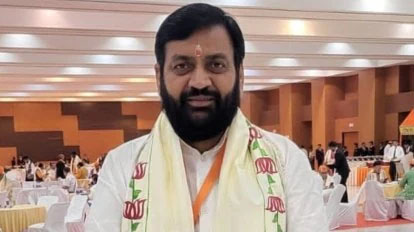NEW DELHI, July 13
With less than 100 days to go for the Haryana assembly elections, the BJP is relying on caste factor to deal with the challenge as the recent Lok Sabha elections threw up a nasty surprise for the ruling party.
The BJP will be contesting polls with incumbent Nayab Singh Saini as the CM face. Saini belongs to the OBC category, while the state party president appointed early this week, Mohan Lal Badoli, is a Brahmin. The state in-charge of party affairs Satish Poonia is a Jaat leader, while a co-in-charge Surender Singh Nagar is a Gurjar, another influential OBC caste in the state. The party had earlier sent its first chief minister, Manohar Lal Khhatar, a Punjabi, to the union cabinet as housing and urban affairs minister.
The BJP had lost five out of the 10 parliamentary seats to the Congress. This was a setback to the party as it had won all the seats in 2014 and 2019. As Haryana will go to polls with Maharashtra, another state where the BJP alliance suffered a setback, the stakes are higher for this round of assembly polls as these would again be pinned as referendum on Prime Minister Narendra Modi government.
The emphasis on social engineering is aimed at consolidating the non-Jaat voters in the state. The landed community, Jaats, had turned to Congress during the last Lok Sabha polls, and the community based party, JJP, in the previous polls. Furthering this non-Jaat votes calculus, Home Minister Amit Shah will be in Haryana to address an OBC rally later this week. This will be his second visit to the state within less than a month overseeing the poll preparations after the party suffered loss in the parliamentary polls. During his previous visit, Shah had declared Saini as the CM candidate. The OBCs constitute nearly 30 per cent of the state politics. The state government had announced last month an increase in reservation from 15 per cent to 27 per cent in government jobs, also revising the creamy layer limit from six lakh to eight lakh.
The BJP had won the 2014 polls with the help of non-Jaat voters after which a Punjabi chief minister, Manohar Lal Khattar was installed. Considered close to Prime Minister, Khattar had a successful run till the party saw reverse consolidation in favour of the opponents. Will this policy of consolidating non-jaat voters pay off? Not to be seen as a party ignoring the Jaat leaders, it recently inducted Congress leaders Kiran Chaudhary and her daughter Shruti, a former MP, to the party fold. They are family members of former CM Bansi Lal. With their induction, the party leaders gloated that all the ‘Lals’ were now in the party. The family members of Devi Lal, Bhajan Lal, Bansi Lal—all formidable leaders and former CMs of the state—are now in the BJP. The Congress, on the other side, is relying on the Jaats, dalits, Muslims, and other castes for return to power. The land owing class, Jaats, were an active participants in the farmers’ agitation which played a key role in turning sentiment against the BJP.
Also fighting for the 25 per cent Jaat-voters bank is Dushyant Chautala-led JJP, which has aligned with the BSP in the state. Chautala’s estranged uncles form a separate political party, INLD. The Aam Aadmi Party will also be contesting the elections.
With political activity set to pick up ahead of the polls, the state neighbouring national capital will again be hogging the limelight.
There have been reports that farmers’ unions may again launch a fresh agitation, which will make the assembly polls much more polarising.



























